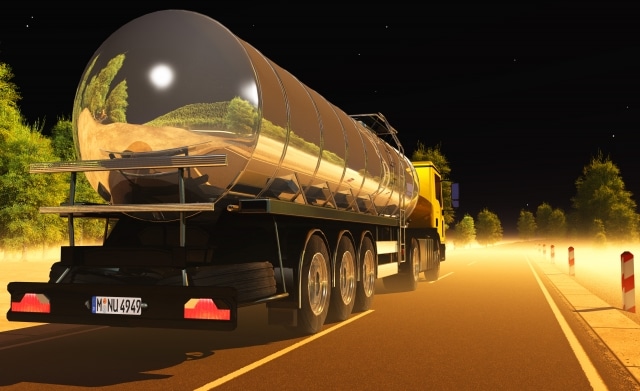A joint investigation by the Houston Chronicle and Houston Public Media shines a light on one of the fracking boom’s lesser known impacts: traffic deaths.
With several shale fields in play—including Eagle Ford and Permian Basin, which together are pumping out over 3.2 million barrels per day—Texas has contributed heavily to the fracked oil boom. Apparently, motorists have paid a heavy price for that oil.
Since the state’s fracking boom began in 2008, Texas has bucked the national trend and seen its traffic fatality numbers going up, leading the country in motor vehicle deaths every year.
The police don’t note in accident reports whether or not a particular vehicle involved in a crash belonged to an oil company or who the driver at fault worked for, so it’s nearly impossible to actually quantify the oil industry’s responsibility for traffic deaths.
But the joint investigation finds that the shocking 51% increase in accidents involving commercial vehicles correlates closely to counties where fracking operations are concentrated:
There’s no way to tell from Texas traffic accident data just how many passenger cars or commercial vehicles that crashed can be linked directly to the state’s oil and gas boom. But records show that fatal accidents increased more in the groups of counties that make up the Permian Basin and in those affected by the Barnett and Eagle Ford shale plays, where busy roads regularly fill with tractor-trailers, tanker trucks and commercial vans hauling water, workers and supplies to oil and natural gas well sites, as well in urban counties that serve as burgeoning hubs for the oil field industry.
Motor vehicle fatalities reported in the West Texas counties associated with the Permian Basin increased more than 50 percent from 2009-2013. Deaths rose 11 percent in Eagle Ford counties as well as in Barnett Shale counties, according to subtotals the Houston Chronicle computed and compared for each multicounty area from Texas Department of Transportation crash data.
The Houston Chronicle’s series of investigative reports, “Boom in Oil and Traffic Deaths,” is as devastating as it is outrage-provoking. You can listen to Houston Public Media’s report here:
The galling part is that many of these fatalities could probably be prevented if the right safety protocols were followed, but state audits have been ineffective at keeping dangerous drivers and poorly maintained trucks off the road.
The Houston Chronicle tells a particularly vivid story of a truck carrying 80,000 pounds of flammable oil-based mud when a tire blowout caused it to careen in front of another truck:
The collision caused a massive explosion that produced a black cloud visible by officials patrolling the U.S.-Mexico border 50 miles away. Both drivers were ejected and their bodies burned. It took a week to identify them using DNA for burial, according to accident reports and related court records. Records show Turn Around Trucking had a terrible safety record prior to the 2010 crash. In 2010-2011, dozens of inspections uncovered serious safety problems in its fleet of 15 trucks, including bad brakes and blown out tires. Still, the company had managed, barely, to pass state audits.
Trucks are used for just 4% of oil shipments, so it’s hardly time to raise the specter of bomb trucks roaming our streets. But increased traffic fatalities in communities adjacent to fracking operations are by no means a phenomenon limited to Texas.
The Associated Press analyzed traffic deaths and US census data from six different drilling states and found that “in some places, fatalities have more than quadrupled since 2004 — a period when most American roads have become much safer even as the population has grown.”
“This boom is different from those of the past because of the hydraulic-fracturing process, which extracts oil and gas by injecting high-pressure mixtures of water, sand or gravel and chemicals,” the Associated Press reports. “It requires 2,300 to 4,000 truck trips per well to deliver those fluids. Older drilling techniques needed one-third to one-half as many trips.”
Hat tip to Earthworks.
Image Credit: Car with fuel on the road at night. by iurii / Shutterstock.com
Subscribe to our newsletter
Stay up to date with DeSmog news and alerts






